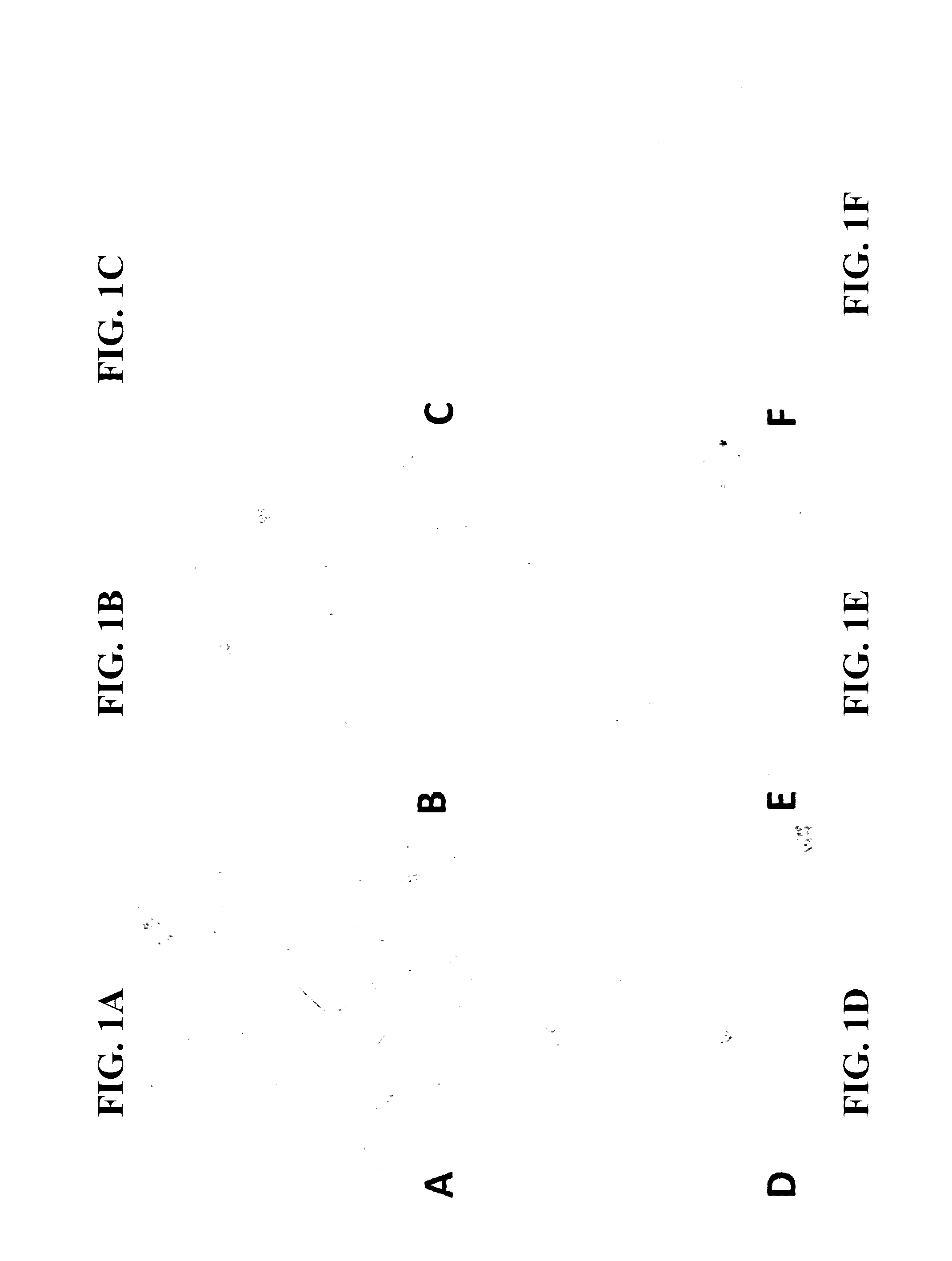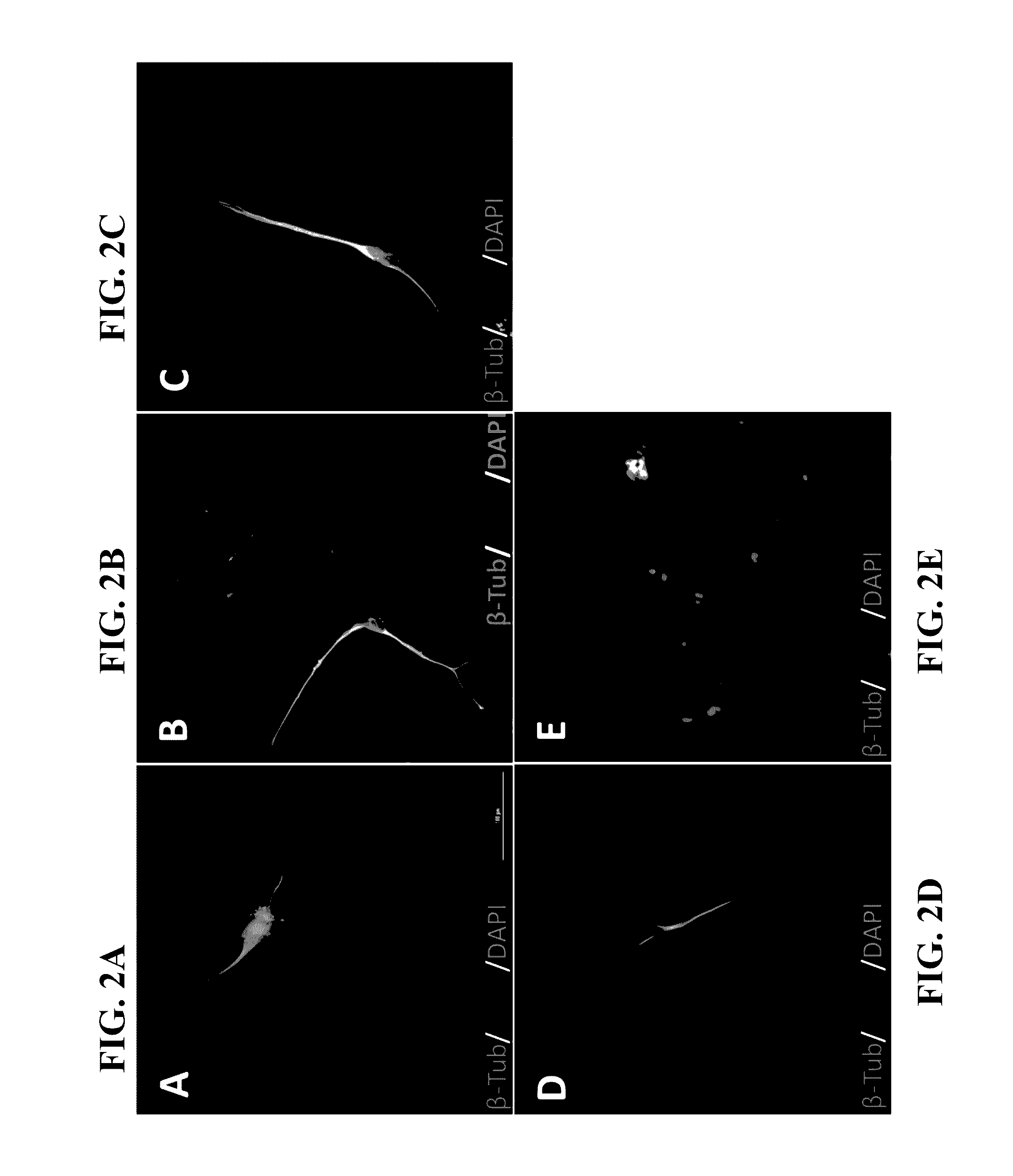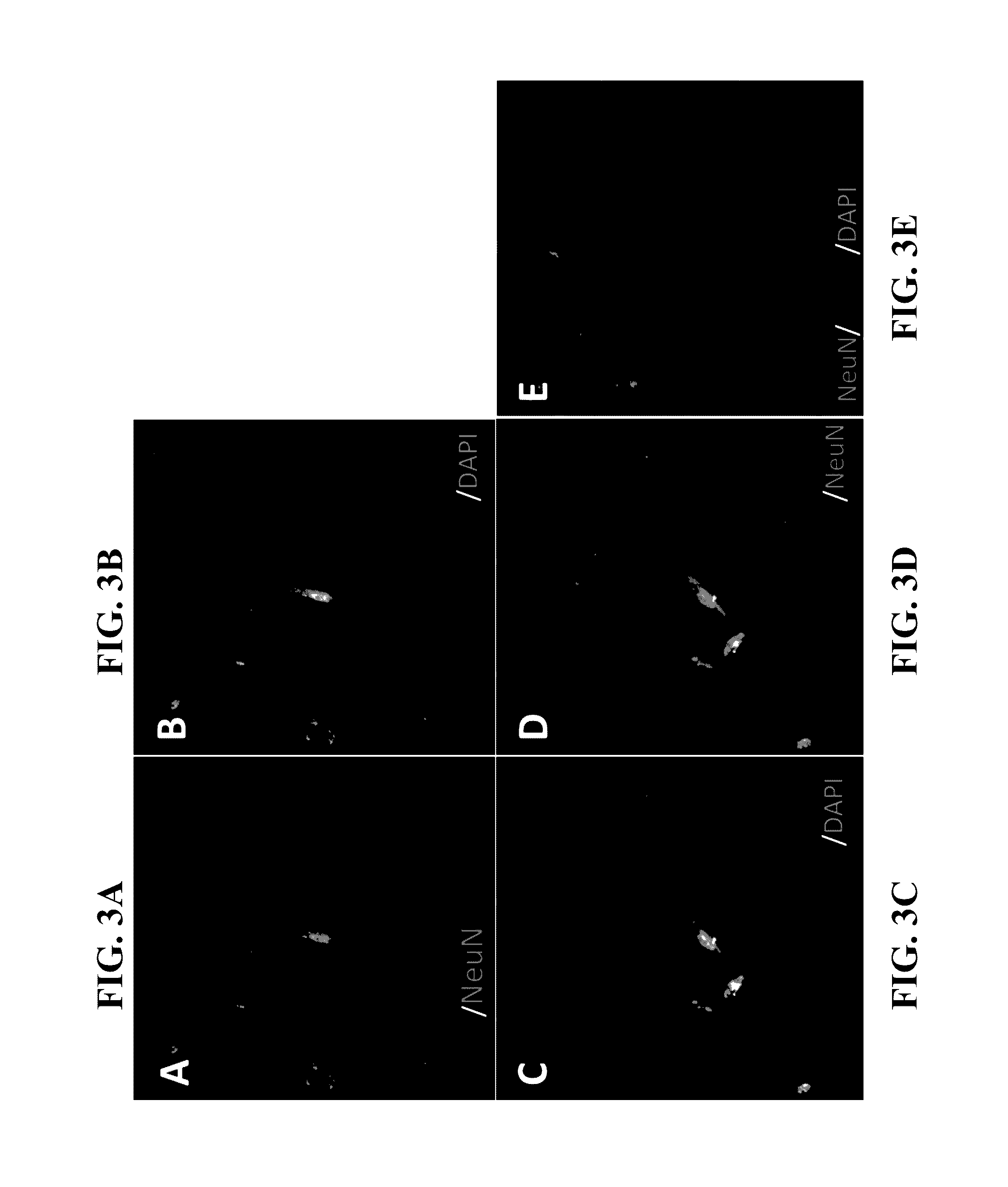Conversion of non-neuronal cells into neurons
a technology of non-neuronal cells and neurons, applied in the direction of genetically modified cells, skeletal/connective tissue cells, instruments, etc., can solve the problems of shortened neuron development time course, 19 days post antibiotic selection, and expensive neurotrophic factors
- Summary
- Abstract
- Description
- Claims
- Application Information
AI Technical Summary
Benefits of technology
Problems solved by technology
Method used
Image
Examples
example 1
[0040]Fibroblasts obtained from human skin are cultured on a coverslip coated with poly-D-lysine and laminin overnight. The following day, cells are transduced with lentivirus containing PTB1 shRNA for 16 hours and the medium is replaced. After 24 hours, the cells are selected using hygromycin (100 ng / ml) for 48 hours. The neural induction medium containing (10 μM) Rock inhibitor is added and cells are incubated for 6-8 days for induced neuronal development (see FIGS. 1-4). As shown in FIG. 5, the induced neurons are able to uptake monomeric Tau and form Tau aggregates inside the cell. In summary, we have successfully induced neurons from human skin fibroblast in half the time that is reported by others and without using any expensive neurotrophic factors. This newly discovered method will hasten personalized medicine approaches for Alzheimer's disease and possibly many other neurodegenerative diseases.
[0041]It should be understood that the examples and embodiments described herein ...
PUM
| Property | Measurement | Unit |
|---|---|---|
| time | aaaaa | aaaaa |
| of time | aaaaa | aaaaa |
| structure | aaaaa | aaaaa |
Abstract
Description
Claims
Application Information
 Login to View More
Login to View More - R&D
- Intellectual Property
- Life Sciences
- Materials
- Tech Scout
- Unparalleled Data Quality
- Higher Quality Content
- 60% Fewer Hallucinations
Browse by: Latest US Patents, China's latest patents, Technical Efficacy Thesaurus, Application Domain, Technology Topic, Popular Technical Reports.
© 2025 PatSnap. All rights reserved.Legal|Privacy policy|Modern Slavery Act Transparency Statement|Sitemap|About US| Contact US: help@patsnap.com



